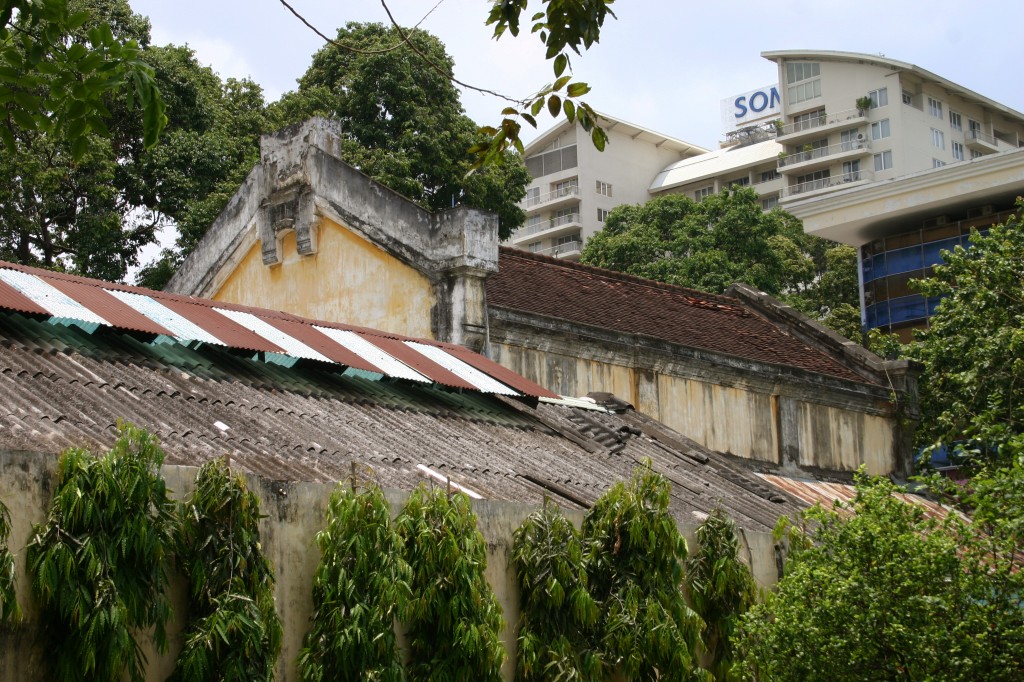
The roof of the former Temple protestant may be seen from Lê Duẩn boulevard
Directly opposite the British Consulate in Hồ Chí Minh City, amidst the clutter of buildings on the Lê Duẩn-Mạc Đỉnh Chi street intersection, you may be able to make out the roof of what was once the city’s only French protestant chapel
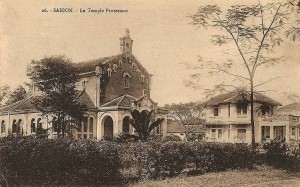
The Temple protestant and Presbytère pictured in the early 20th century
The Paris-based Église Réformée de France (Reformed Church of France) was active in Cochinchina from the late 1870s, and in 1882 its spiritual leader in Saigon, Pastor Métever, applied to the Colonial Council for land on which to build a permanent chapel.
However, this was not forthcoming until April 1904, when, for the nominal price of 1 Franc, the Société was given a plot of land measuring 82 ares 45 centiares [1 are = 100 square metres] in the grounds of the 1837 citadel – on the express condition that if, for whatever reason, the temple had to be decommissioned, the land granted would be returned to the authorities in its original state.
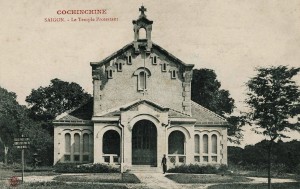
Another early 20th century view of the Temple protestant
Construction of the chapel got under way in 1904 and it was inaugurated in the following year. During the same period, a large house was built next door to the chapel, to serve as the presbytery, or residence of the pastor.
Being the only protestant chapel in the city, the “Temple protestant” was relatively well attended for much of the colonial era and also hosted the funeral services of several leading protestant colons.
After the departure of the French in 1954, the chapel continued to function for several years under the name Église réformée de langue française.
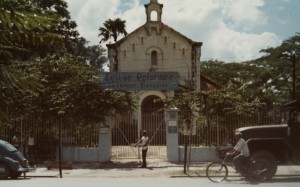
From the early 1960s, the Église réformée de langue française was used mainly by the Anglican Episcopal Church
During the 1950s, large numbers of American advisers arrived in Saigon, and in 1959-1960 the chapel’s owner, the Église Réformée de France, made the premises available for use by the US-based Anglican Episcopal Church, which renamed it “St Christopher’s.”
Thereafter until 1965, the American Community in Saigon held a regular service here at 11am every Sunday, preceded by Sunday School lessons for children attending the American Community School at the Norodom Compound (later the site of the US Embassy). During the same period, the British Embassy held Sunday evening services at St Christopher’s.
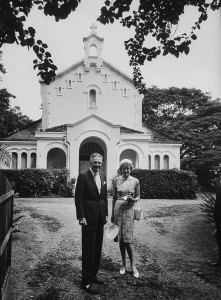
US Ambassador Henry Cabot Lodge Jr and his wife leaving St Christopher’s Anglican Episcopal Church in 1964 (Life Magazine)
When the first US combat troops arrived in February 1965 and all dependents of US diplomatic, aid mission and military personnel were ordered to leave South Việt Nam, the chapel became much quieter.
However, it continued to be used by both US and British Embassy personnel right down to 1975.
After Reunification, the chapel was closed and the building was divided up into smaller rooms. These are now leased to a range of different companies by its current owner, the District 1 Cultural Centre.
The old presbytery next door currently houses the Office of National Assembly Representatives (Văn Phòng Đại Biểu Quốc Hội).
Thanks to Pascal Bourdeaux of EFEO for providing additional information on the Protestant Chapel
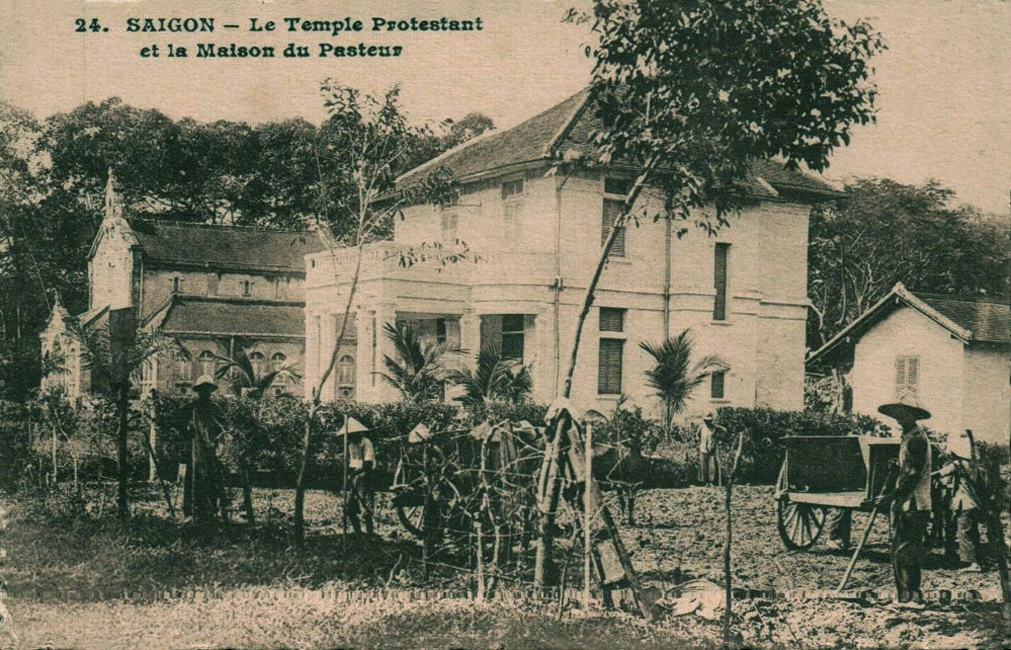
Another early 20th century view of the Temple protestant and Presbytère
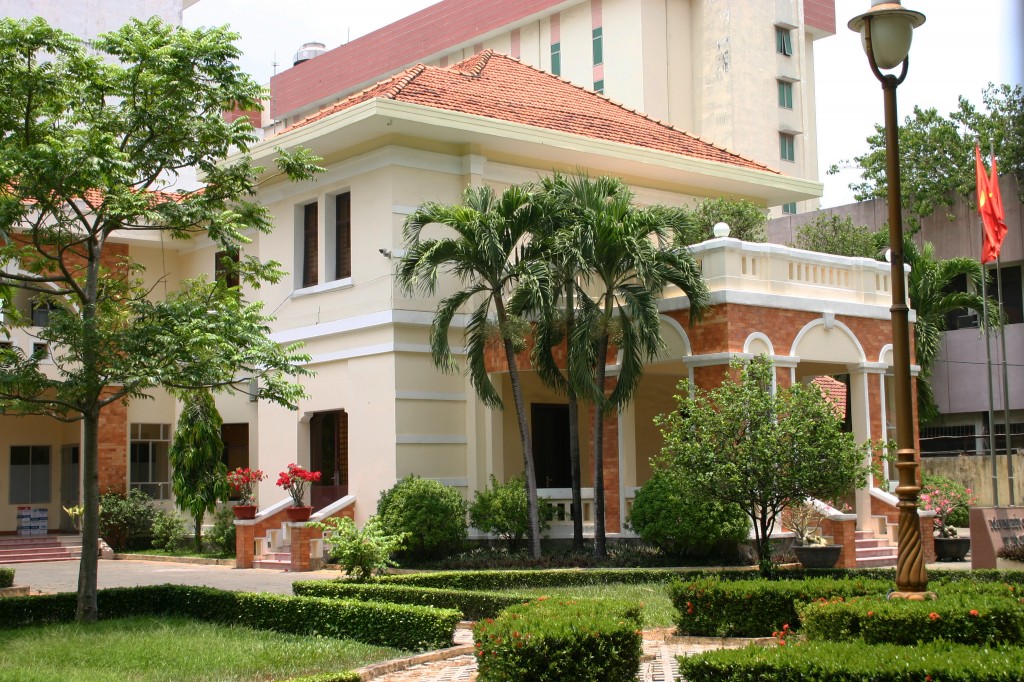
The former presbytery currently houses the Office of National Assembly Representatives
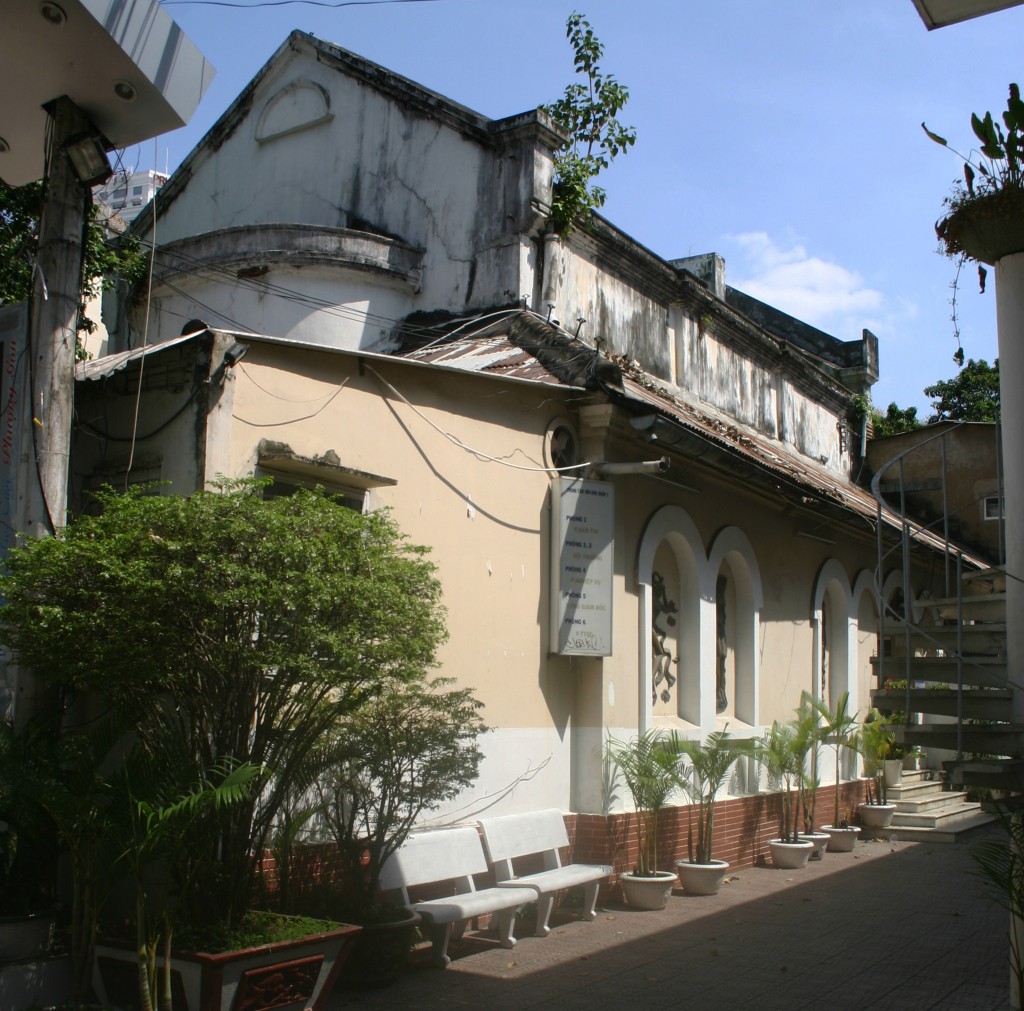
A rear view of the old Temple protestant today

The old Temple protestant today, viewed from above
You may also be interested to read these articles:
Saigon’s Favourite Churches – Huyen Sy Church
Saigon’s Favourite Churches – Hanh Thong Tay Church
Saigon’s Favourite Churches – Tan Dinh Church
Tim Doling is the author of the guidebook Exploring Saigon-Chợ Lớn – Vanishing heritage of Hồ Chí Minh City (Nhà Xuất Bản Thế Giới, Hà Nội, 2019)
A full index of all Tim’s blog articles since November 2013 is now available here.
Join the Facebook group pages Saigon-Chợ Lớn Then & Now to see historic photographs juxtaposed with new ones taken in the same locations, and Đài Quan sát Di sản Sài Gòn – Saigon Heritage Observatory for up-to-date information on conservation issues in Saigon and Chợ Lớn.

